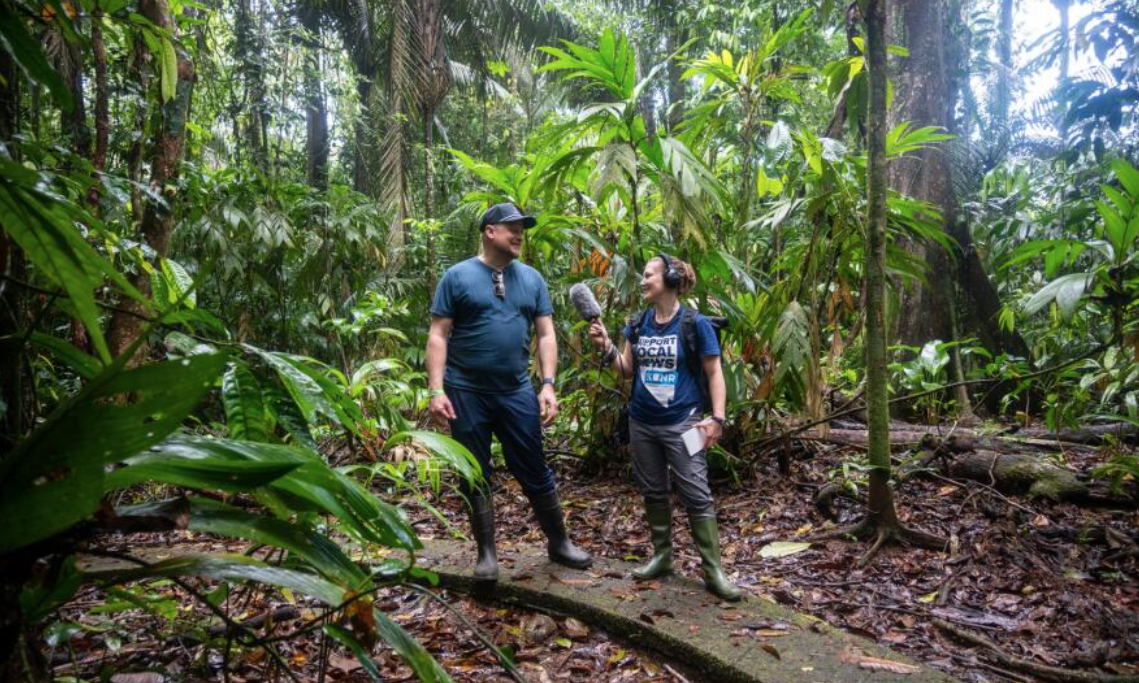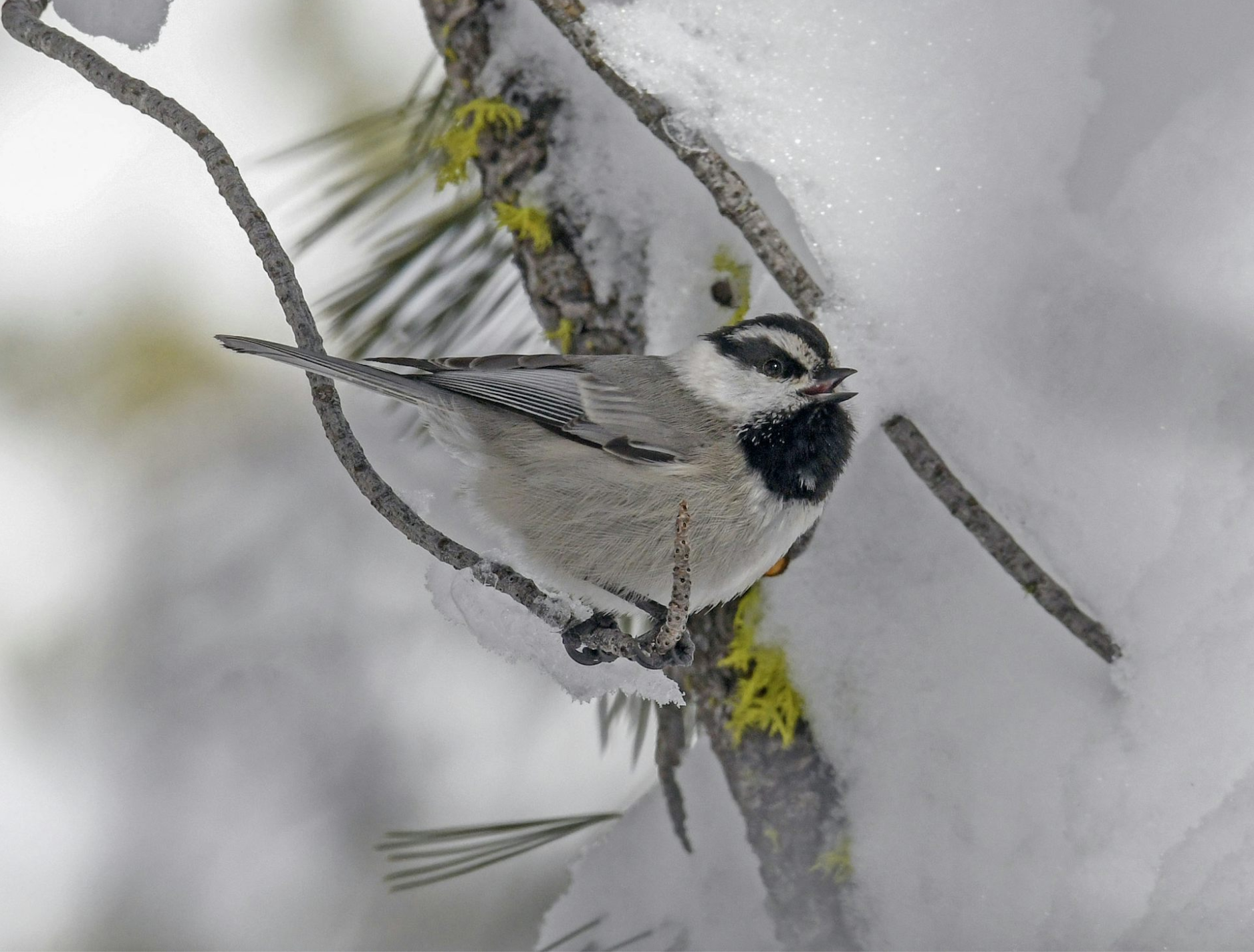Above: Reporter Kat Fulwider interviews UNR professor and researcher Chris Jeffrey in the jungle surrounding La Selva Research Station in Costa Rica. Credit: Gaby Moreno.
This story was shared with permission from KUNR Public Radio. For an audio version of the story, please visit the KUNR website.
The jungle comes to life in a symphony of cawing birds and cicadas as a light rain pitter-patters through the rainforest canopy overhead. I breathe in the smell of rich soil and fresh rain as I follow UNR researcher and professor Chris Jeffrey down a narrow path into the jungle surrounding La Selva Research Station. He’s on the lookout for a specific kind of plant integral to his team’s research.
Jeffrey stops to examine a leafy plant in the sea of foliage. Just as he says, “This is the Piper plant…” he’s interrupted by the haunting sounds of howler monkeys hooting overhead.
This is the reason Jeffrey, a chemistry professor and director of the Hitchcock Center for Chemical Ecology, and his team travel thousands of miles from Reno to the Costa Rican jungle for their research – it is teaming with life.
As he laughs about the vocal monkeys overhead and begins to explain why they come to the jungle for their research he is interrupted yet again, but this time by a distracting bright red and blue strawberry poison-dart frog hopping through the understory.
“Oh! there’s a – did you ever see one of them poison-dart frogs? There’s another cool chemical interaction case, right?” Jeffrey says as he launches into a conversation about the web of chemical interactions found in the neotropics.
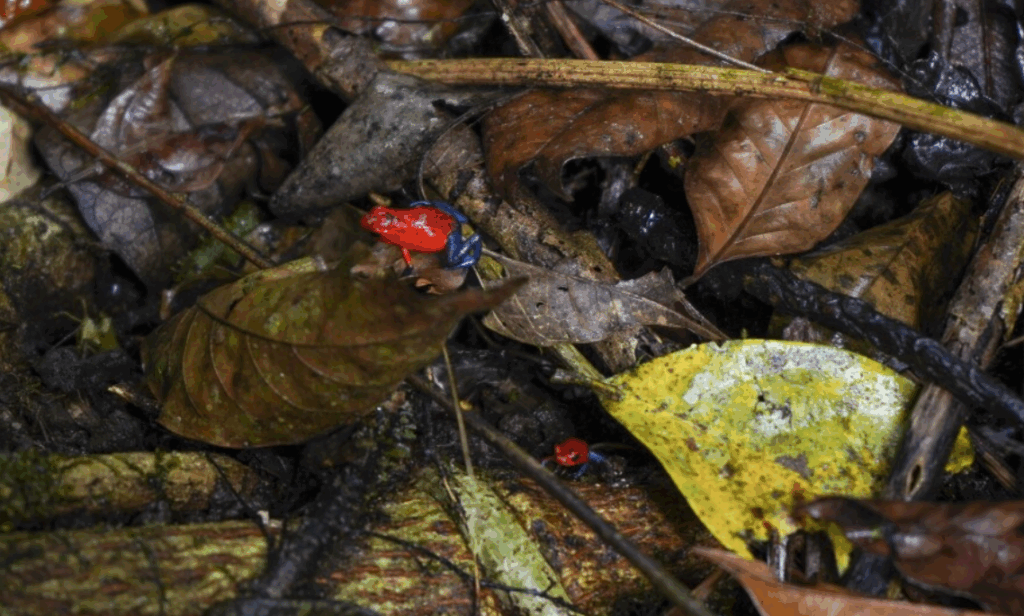
Watching Jeffrey walk through the forest is definitely like watching a kid in a candy shop.
“If you’re trying to study interactions, this is the place to do it, because there’s a lot of them if you can’t already tell,” he says, gesturing to the surrounding tapestry of green foliage.
The researchers come here to study the often unseen ways that plants, chemicals, insects, and people are interconnected. Specifically, they are examining the cascade of chemical interactions between a genus of plants in the pepper family – known as Piper – and the species of caterpillars that feed on them.
Since plants can’t run away from their predators, they have to find other ways to defend themselves. Jefferey says one way is through chemistry.
“One of the questions that’s unsolved is, how do plants – and if this specialized chemistry is so important to a plant to survive – then how is it inherited? What does that look like?” Jeffrey says.
To answer these questions, they are taking an interdisciplinary approach – working with local experts and scientists in various fields from genetics to mathematics.
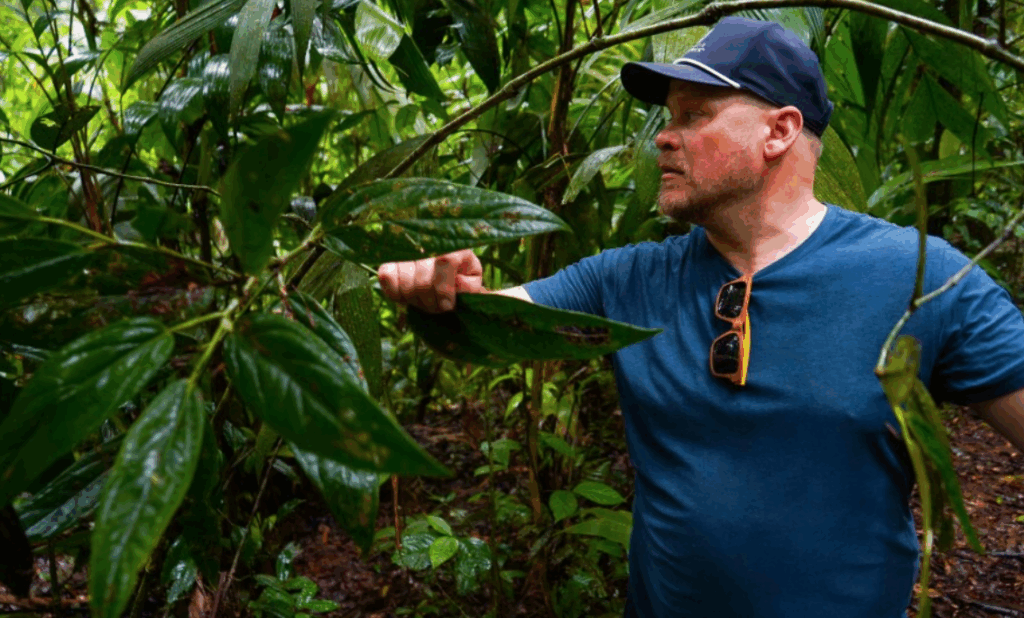
Straight out of a scene from “Alien”
Lee Dyer has been doing research at La Selva since 1991. He’s a professor and researcher in the ecology, evolution and conservation biology department at UNR.
“Part of understanding global issues, and Nevada is part of a global community, is to understand tropical forests, which contain the majority of biodiversity,” Dyer says.
His work focuses on caterpillars that eat the rainforest plants, including Pipers, and parasites, known as parasitoids, that then eat these caterpillars. The caterpillars engage in a bit of chemical warfare though, using the chemical compounds found in the Piper plants to protect themselves from becoming someone’s lunch.
“A parasitoid is like the monster in the movie ‘Alien.’ Typically, they will put their eggs inside of a host, which could be any insect, but in this case, we’re talking about caterpillars,” says Dyer. “And then it hatches out and starts consuming the Caterpillar. When it’s ready to pupate, to go to the adult stage, it comes bursting out.”
Just like in the movie “Alien,” the caterpillar host does not survive this encounter. Dyer says studying these interactions is important to understanding biodiversity on our planet and explains how these parasitoids play an important role in the ecosystem and agriculture.
“There’s no caterpillar that doesn’t have at least one kind of parasitoid that attacks it, and if you lose those, you will start getting problems with insect populations that are normally controlled by these parasites,” says Dyer.
Dyer says this scenario is seen in agriculture. When insecticides are applied they often end up harming the parasitoids more than the caterpillars themselves, leading to a secondary boom in caterpillar population which doesn’t bode well for crops.
A research group led by Dyer at La Selva found a stark decline in insect and parasitoid populations over the decades. He says that many species have yet to be discovered, and losing them could not only have dire consequences on crops and the ecosystem, but also a more philosophical one as well.
“If we lose them, for me it’s like burning down libraries full of poetry books that no one has ever read, because we haven’t even discovered them yet,” Dyer says.
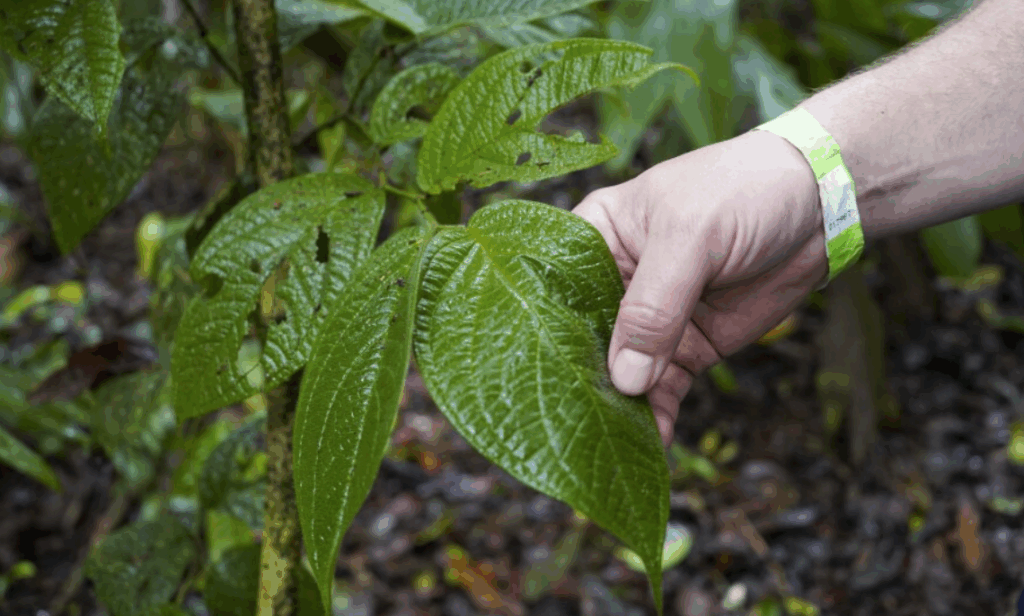
Looking Forward
The research in Costa Rica is part of a larger project taking place in Ecuador where scientists are collaborating with anthropologist Tod Swanson and local indigenous Waorani and Quechua tribes to combine traditional ecological knowledge with scientific understanding.
The benefits of this work go beyond hard science.
“We’ve brought many students from Nevada, many students from other universities where I’ve worked, to this station and to the station in Ecuador, and it really opens their eyes, not just to the biodiversity, but to other cultures and other ways of thinking about things,” says Dyer.
But recent cuts to grant funding are impacting this research and Dyer says in the coming years he will likely have to find alternative sources of funding and may have to scale back operations.
Scientists from UNR are moving forward with their biodiversity research though, and are gearing up to venture into the Amazon Jungle this summer to continue their work.
“I encourage people from the community to come reach out to a scientist and and dig deep in what’s going on, because it might open up a world that you never thought was right there in your backyard,” Jeffrey says.
Kat Fulwider is a reporter for KUNR and visited Costa Rica for a travel reporting class with the Hitchcock Project for Visualizing Science during spring 2025. She is a student in the master’s program at the Reynolds School of Journalism.

